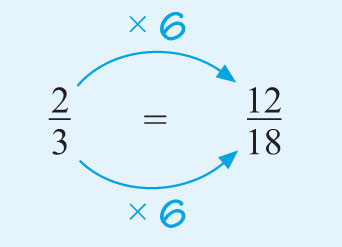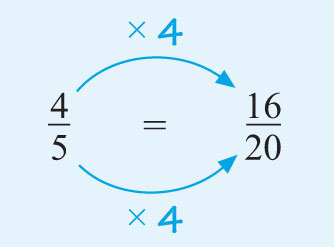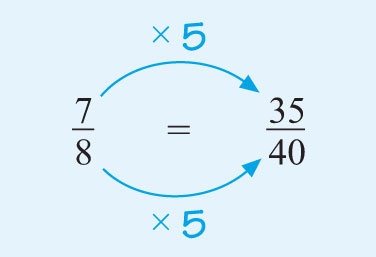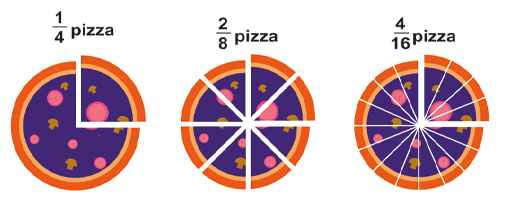2.1 Working with equivalent fractions
This section shows you a slightly different way to help you visualise the process of finding equivalent fractions and simplifying fractions.
Figure 7 shows three pizzas. You can see that of a pizza is the same as of a pizza, and also the same as of a pizza. So all these fractions are equivalent and can be simplified to . This is similar to the example of folding a piece of paper.
Below are some examples for you to try but before you do that you might like to view this video on equivalent fractions.

Transcript
Remember, when carrying out the activity there may be more than one way to arrive at the answer, and you must divide or multiply both the numerator and the denominator by the same number at each step. Note it has to be multiplying or dividing – they are the only operations that make this work.
Activity 1 Equivalent fractions
(a) Use your knowledge of equivalent fractions to determine the missing numbers. Remember that both the numerator and the denominator must be multiplied or divided by the same number.
(i)
Hint: the denominator of the fraction on the left is 3. What do you have to multiply it by to get 18? Remember that if you multiply the denominator by a particular number, you must do the same to the numerator to keep the fractions equivalent.
Answer
The 3 is multiplied by 6 to reach 18, so this is the number that is used to multiply both the numerator and the denominator. The missing number is 12.

(ii)
Answer
Similarly, since 5 × 4 = 20, multiply the numerator and the denominator by four. The missing number is 16.

(b) Which of the following three fractions are equivalent to each other?
(i)
(ii)
(iii)
Answer
Multiplying the numerator and the denominator of the first fraction by five gives:

Only the two fractions labelled (i) and (ii) are equivalent.
You cannot create from by multiplying the numerator and the denominator by the same number.
If you multiply by 7 you get , which isn’t . If you multiply by 8 you get , which isn’t , either.
(c) Simplify the following fractions:
(i)
(ii)
(iii)
(iv)
Hint: what number can divide exactly into both the numerator and the denominator of each fraction? Remember, there could be more than one option or step to fully simplify these.
Answer
(i) Dividing the top and the bottom by 2 gives .
(ii) Dividing the top and the bottom by 10 (or by 5 and then by 2) gives .
(iii) Dividing the top and the bottom by 9 and then by 3 gives .
(iv) Dividing the top and the bottom by 4 and then 3 gives .
(Of course it does not matter which number you divide by first, and there are even more choices than the ones shown.)
If you find it difficult to spot the numbers to divide by, try to work systematically by trying 2, 3, 5 … in turn.
In the next section, you can try an activity where you need to write your own fractions from information you are given. Remember to show these in their simplest form – this is the way that fractions should be shown.

